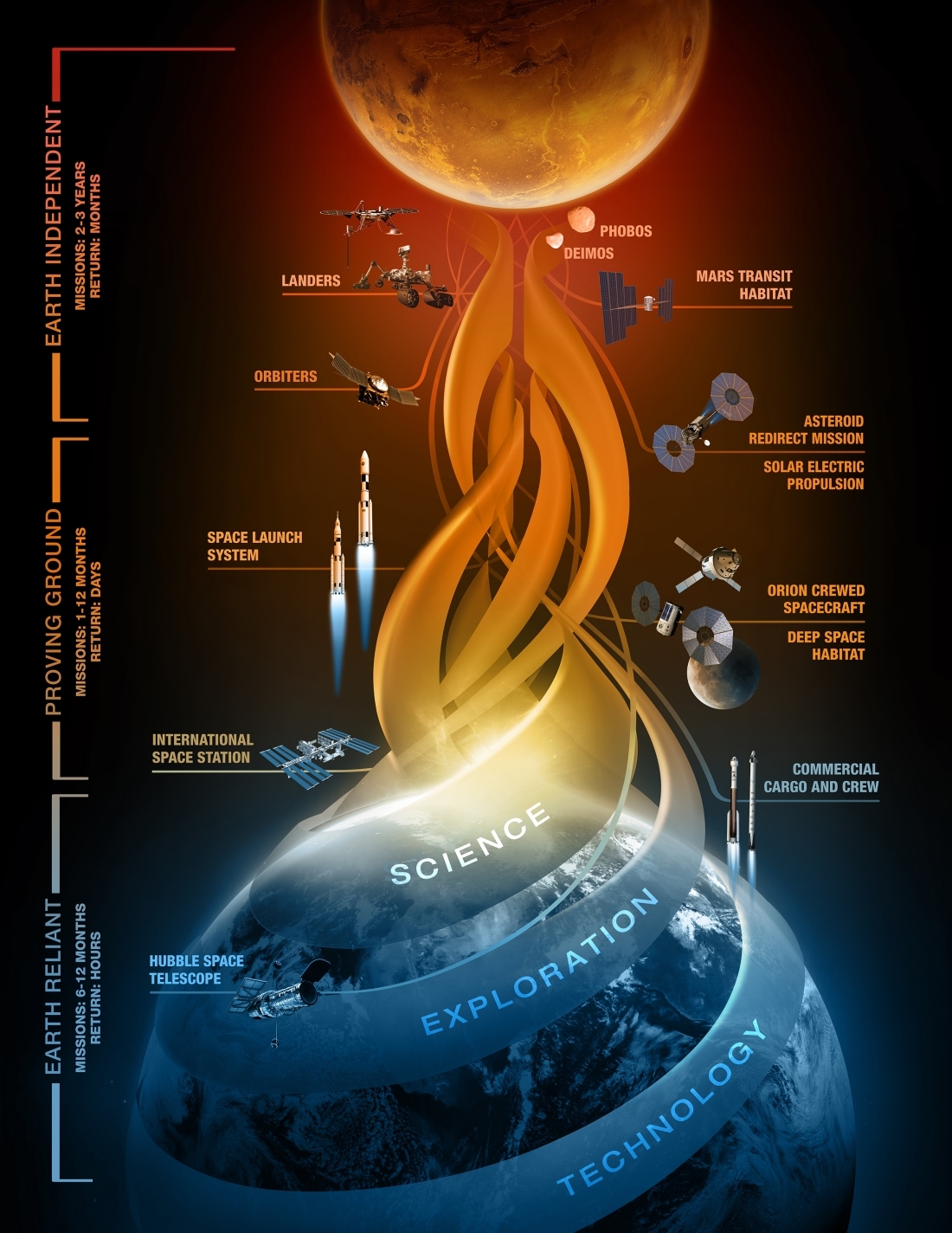NASA has published a three-phase plan that outlines the steps necessary to send astronauts to Mars.
The first step in the journey to Mars, Earth Reliant, is already taking place aboard the International Space Station. There, scientists are studying how the human body reacts to space, developing 3D printing methods, testing material flammability, advancing communications systems and more.
In the Proving Ground stage, NASA aims to conduct operations in a deep space (cislunar) environment that would allow crews to return to Earth in just a few days. This step involves the EM-1 exploration mission in 2018 and the Asteroid Redirect Robotic Mission in 2020 in which astronauts will grab a large bolder from an asteroid and bring it back to the Proving Ground for further study.
The final phase, Earth Independence, builds on the previous two stages to enable human missions to the Mars vicinity including its moons and eventually, the Martian surface. The goal here is to be able to harvest resources from Mars to create fuel, water, oxygen and building materials to sustain life. NASA also wants to install a communications system that would relay data and results from science experiments back to Earth with a minimum 20-minute delay.
The goals are no doubt ambitious but if anybody can pull it off, it's NASA.
The full 32-page document, titled "NASA's Journey to Mars: Pioneering Next Steps in Space Exploration," can be found by clicking here.
